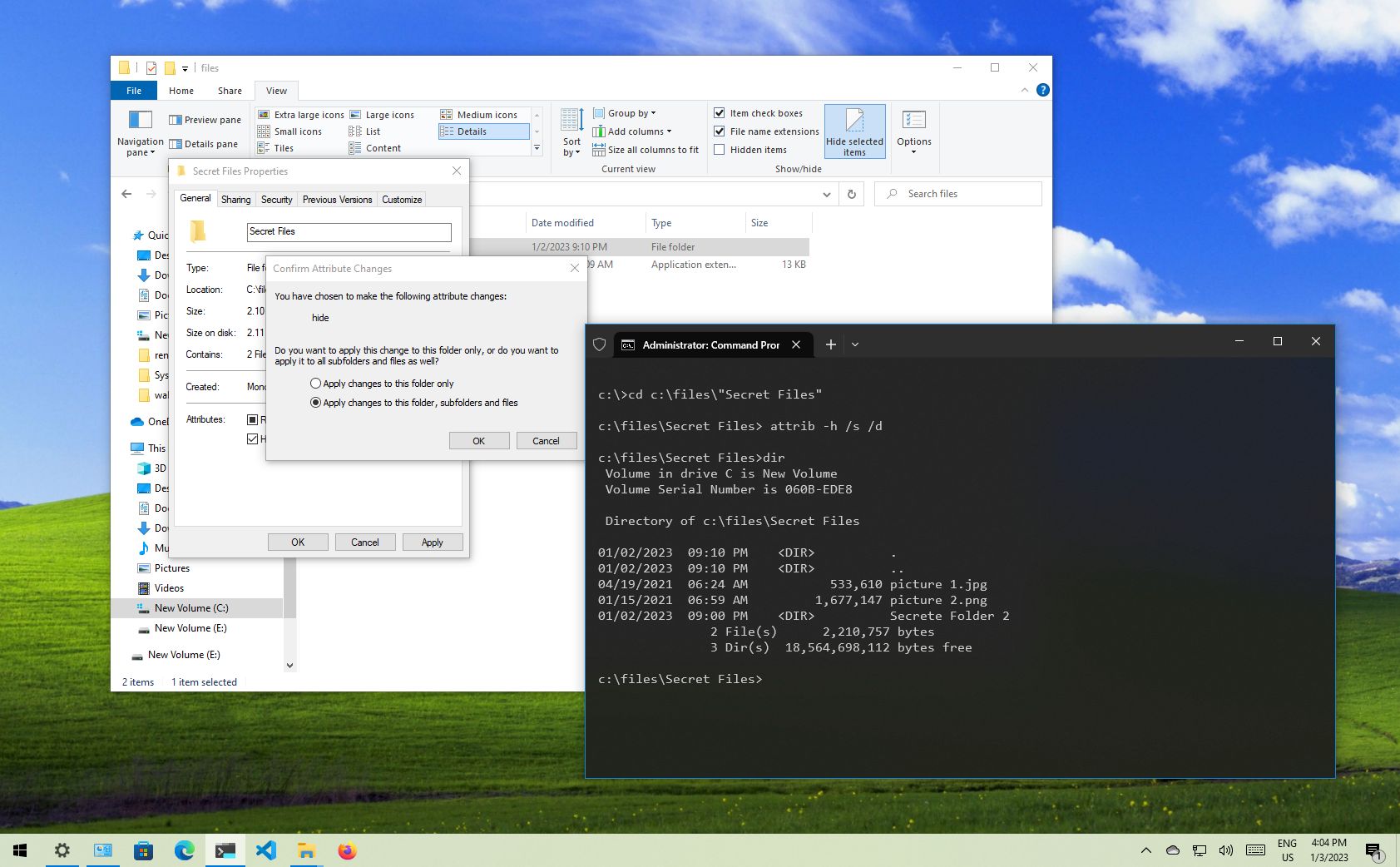How To Hide Files And Folders On Every Operating System

How To Hide Files And Folders On Every Operating System: The Comprehensive Guide
We’ve all been in a situation where we need to keep some files or folders secure and private. Whether you’re trying to keep your important work documents safe, or you’re trying to protect your personal files from prying eyes, hiding files and folders is a necessary security measure.
The Basics of Hiding Files and Folders
At its core, hiding files and folders is a simple process. Depending on the operating system you’re using, you can hide a file or folder by changing its permissions, or by renaming the file to begin with a “.”.
Hiding Files and Folders in Windows
On a Windows computer, the simplest way to hide a file or folder is to change its permissions. To do this, you’ll need to open the File Explorer, find the file or folder you want to hide, right-click it, and select “Properties”. Once in the Properties window, go to the “Security” tab and select “Advanced”. From there, you can click the “Change Permissions” button, select the user that you want to deny access to, and then click “Deny”.
You can also use the “Hidden” attribute to hide a file or folder. To do this, right-click the file or folder, select “Properties”, and then check the box next to “Hidden”.
Hiding Files and Folders in Mac OS
On a Mac computer, you can use the “chflags” command to hide a file or folder. To do this, open the Terminal and type “chflags hidden” followed by the file or folder’s path. You can also use the “mv” command to rename a file or folder with a “.” at the beginning, which will make it invisible.
Hiding Files and Folders in Linux
On a Linux computer, you can use the “chmod” command to change a file or folder’s permissions and make it inaccessible. To do this, open the Terminal and type “chmod go-rwx” followed by the file or folder’s path. Alternatively, you can use the “mv” command to rename a file or folder with a “.” at the beginning, which will make it invisible.
The Benefits of Hiding Files and Folders
Hiding files and folders has a number of benefits, both for personal and business use. For example, it can help keep sensitive information from being seen by unauthorized users, and it can also help keep files organized, making it easier to find them when you need them.
Increased Security
The most obvious benefit of hiding files and folders is increased security. By hiding files and folders, you can make sure that only authorized users can access them. This is especially important for business users, who may have sensitive customer data or financial information that needs to be kept secure.
Improved Organization
Another benefit of hiding files and folders is improved organization. By hiding the files and folders that you don’t use often, you can make sure that your file system is easier to navigate and that you can quickly find the files you need. This is especially useful for business users who may have hundreds or even thousands of files that need to be organized.
Conclusion
Hiding files and folders is an important security measure that can help keep sensitive information safe and secure. Depending on the operating system you’re using, there are a number of ways to hide files and folders, including changing permissions or renaming files. Hiding files and folders also has a number of benefits, including increased security and improved organization. No matter what your reason for hiding files and folders, it’s important to make sure that you’re following the proper steps to ensure that your information is safe and secure.

Image :
windowscentral.com
More Info Video
If you're interested in the subject covered in this piece, I suggest checking out the video below. In this footage, you'll obtain further perspectives and knowledge on the matter, as well as graphic illustrations of some of the central concepts and notions covered in the article. You'll also have the chance to listen to professionals in the industry and engage with like-minded viewers who are enthusiastic in the same topic. Whether you're aiming to enhance your understanding of the matter or simply wish to explore it further, this clip is a valuable resource for anyone enthusiastic in acquiring more information. So, if you want to gain a more comprehensive understanding of the theme, do not forget to view the linked video. It's certain to give you the insight and information you need to deepen your knowledge and expertise.
As we conclude, About this topic How To Hide Files And Folders On Every Operating System it is our hope that you will find the insights presented helpful and beneficial. It is understandable that our surroundings is constantly changing, and keeping up with current developments could be challenging. That's why we strive to offer you with the most informative content available. Your feedback is important to us, thus please be sure to drop your thoughts in the comments section. We appreciate your readership and encourage you to check out other articles on our website to broaden your understanding more. Thank you for being a member of our community!

Post a Comment for "How To Hide Files And Folders On Every Operating System"